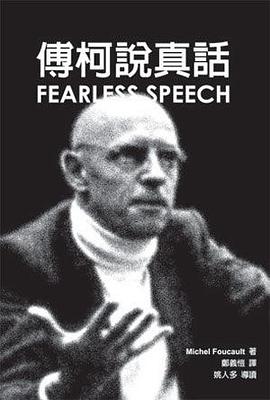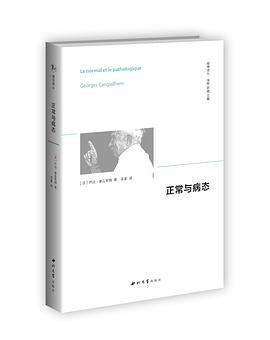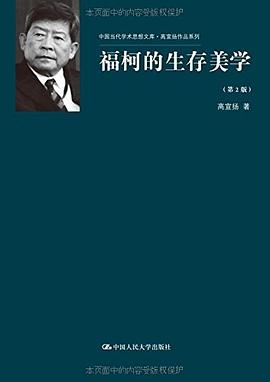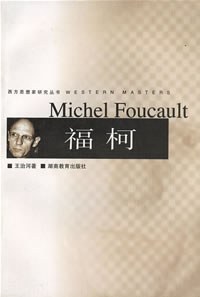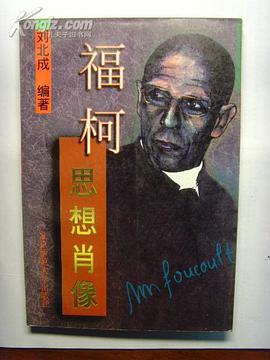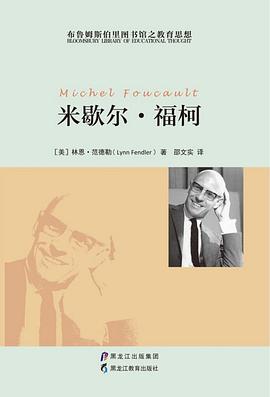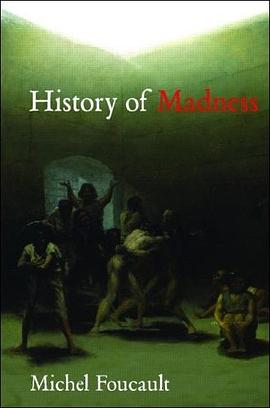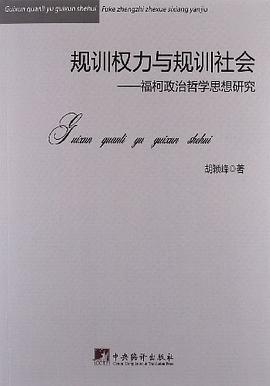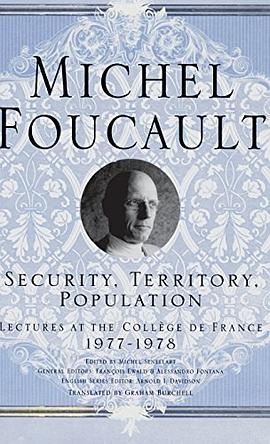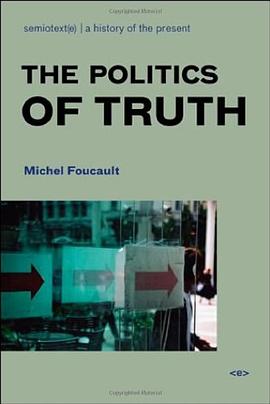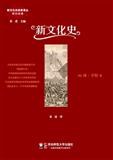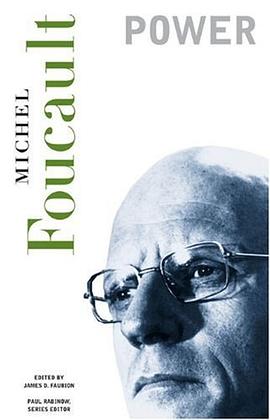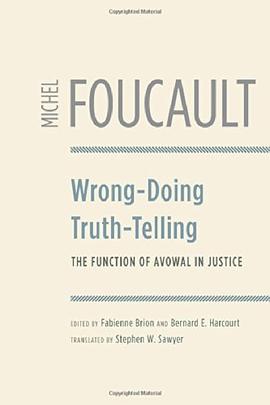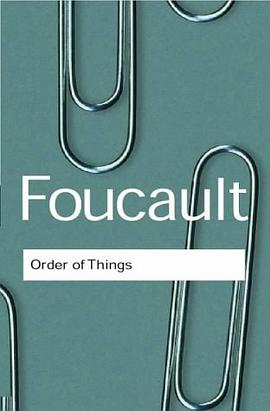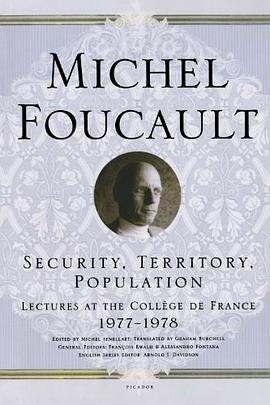
Security, Territory, Population pdf epub mobi txt 電子書 下載2025
- Foucault
- 福柯
- 哲學
- 法國
- SocialTheory
- 論文
- 社會
- 教科書
- 安全研究
- 領土研究
- 人口研究
- 政治地理
- 安全與政治
- 米歇爾·福柯
- 政府性
- 權力
- 空間
- 社會理論

具體描述
Marking a major development in Foucault's thinking, this book takes as its starting point the notion of "biopower," studying the foundations of this new technology of power over populations. Distrinct from punitive disciplinary systems, the mechanisms of power are here finely entwined with the technologies of security. In this volume, though, Foucault begins to turn his attention to the history of "governmentality," from the first centuries of the Christian era to the emergence of the modern nation state--shifting the center of gravity of the lectures from the question of biopower to that of government. In light of Foucault's later work, these lectures illustrate a radical turning point at which the transition to the problematic of the "government of self and others" would begin.
著者簡介
Michael Foucault, acknowledged as the preeminent philosopher of France in the 1970s and 1980s, continues to have enormous impact throughout the world in many disciplines.
圖書目錄
.
Introduction: Arnold I. Davidson
.
One: 11 January 1978
General perspective of the lectures: the study of bio-power. — Five proposals on the analysis of mechanisms of power. — Legal system, disciplinary mechanisms, and security apparatuses ( dipositifs ). Two examples: ( a ) the punishment of theft; ( b ) the treatment of leprosy, plague, and smallpox. — General features of security apparatuses ( 1 ): the spaces of security. — The example of the town. — Three examples of planning urban space in the sixteenth and seventeenth centuries: ( a ) Alexandre Le Maître’s La Métrpolitée ( 1682 ): ( b ) Richelieu; ( c ) Nantes.
.
Two: 18 January 1978
General features of apparatuses of security ( II ): relationship to the event: the art of governing and treatment of the uncertain ( l’aléatoire ). — The problem of scarcity ( la disette ) in the seventeenth and eighteenth centuries. — From the mercantilists to the physiocrats. — Differences between apparatuses of security and disciplinary mechanisms in ways of dealing with the event. — The new governmental rationality and the emergence of “population.” — Conclusion on liberalism: liberty as ideology and technique of government.
.
Three: 25 January 1978
General features of apparatuses of security ( III ). — Normation ( normation ) and normalization. — The example of the epidemic ( smallpox ) and inoculation campaigns in the eighteenth century. — The emergence of new notions: case, risk, danger, and crisis. — The forms of normalization in discipline and in mechanisms of security. — Deployment of a new political technology: the government of populations. — The problem of population in the mercantilists and the physiocrats. — The population as operator ( operateur ) of transformations in domains of knowledge: from the analysis of wealth to political economy, from natural history to biology, from general grammar to historical philology.
.
Four: 1 February 1978
The problem of “government in the sixteenth century. — Multiplicity of practices of government ( government of self, government of souls, government of children, etcetera ). — The specific problem of the government of the state. — The point of repulsion of the literature on government: Machiavelli’s The Prince. — Brief history of the reception of The Prince until the nineteenth century. — The art of government distinct from the Prince’s simple artfulness. — Example of this new art of government: Guillaume de la Perrière Le Miroir politique ( 1555 ). — A government that finds its end in the “things” to be directed. — Decline of law to the advantage of a variety of tactics. — The historical and institutional obstacles to the implementation of this art of government until the eighteenth century. — The problem of population an essential factor in unblocking the art of government. — The triangle formed by government, population, and political economy. — Questions of method: the project of a history of “governmentality.” Overvaluation of the problem of the state.
.
Five: 8 February 1978
Why study governmentality? — The problem of the state and population. — Reminder of the general project: triple displacement of the analysis in relation to ( a ) the institution, ( b ) the function, and ( c ) the object. — The stake of this year’s lectures. — Elements for a history of “government.” Its semantic field from the thirteenth to the sixteenth century. — The idea of the government of men. Its sources : ( A ) The organization of a pastoral power in the pre-Christian and Christian East. ( B ) Spiritual direction ( direction de conscience ). — First outline of the pastorate. Its specific features: ( a ) it is exercised over a multiplicity on the move; ( b ) it is a fundamentally beneficent power with salvation of the flocks as its objective; ( c ) it is a power which individualizes. Omnes et singulatim. The paradox of the shepherd ( berger ). —The institutionalization of the pastorate by the Christian Church.
.
Six: 15 February 1978
Analysis of the pastorate ( continuation ). — The problem of the shepherd-flock relationship in Greek literature and thought: Homer, the Pythagorean tradition. Rareness of the shepherd metaphor in classical political literature ( Isocrates, Demosthenes ). — A major exception: Plato’s The Statesman. The use of the metaphor in other Plato texts ( Critias, Laws, The Republic ). The critique of the idea of a magistrate-shepherd in The Statesman. The pastoral metaphor applied to the doctor, farmer, gymnast, and teacher. — The history of the pastorate in the West, as a model of the government of men, in inseparable from Christianity. Its transformations and crises up to the eighteenth century. Need for a history of the pastorate. — Characteristics of the “government of souls”: encompassing power coextensive with the organization of the Church and distinct from political power. — The problem of the relationships between political power and pastoral power in the West. Comparison with the Russian tradition.
.
Seven: 22 February 1978
Analysis of the pastorate ( end ). — Specificity of the Christian pastorate in comparison with Eastern and Hebraic traditions. — An art of governing men. Its role in the history of governmentality. — Main features of the Christian pastorate from the third to the sixth century ( Saint John Chrysostom, Saint Cyprian, Saint Ambrose, Gregory the Great, Cassian, Saint Benedict ): ( 1 ) the relationship to salvation. An economy of merits and faults: ( a ) the principle of analytical responsibility; ( b ) the principle of exhaustive and instantaneous transfer; ( c ) the principle of sacrificial reversal; ( d ) the principle of alternate correspondence. ( 2 ) The relationship to the law: institution of a relationship of complete subordination of the sheep to the person who directs them. An individual and non-finalized relationship. Difference between Greek and Christian apatheia. ( 3 ) The relationship to the truth; the production of hidden truths. Pastoral teaching and spiritual direction. — Conclusion: an absolutely new form of power that marks the appearance of specific modes of individualization. Its decisive importance for the history of the subject.
.
Eight: 1 March 1978
The notion of “conduct.” — The crisis of the pastorate. — Revolts of conduct in the field of the pastorate. — The shift of forms of resistance to the borders of political institutions in the modern age: examples of the army, secret societies, and medicine. — Problem of vocabulary: “Revolts of conduct,” “insubordination” ( insoumission ),” “dissidence,” and “counter-conduct.” Pastoral counter-conducts. Historical reminder: ( a ) asceticism; ( b ) communities; ( c ) mysticism; ( d ) Scripture; ( e ) eschatological beliefs. — Conclusion: what is at stake in the reference to the notion of “pastoral power” for an analysis of the modes of exercise of power in general.
.
Nine: 8 March 1978
From the pastoral of souls to the political government of men. — General context of this transformation: the crisis of the pastorate and the insurrections of conduct in the sixteenth century. The Protestant Reformation and the Counter Reformation. Other factors. — Two notable phenomena; the intensification of the religious pastorate and the increasing question of conduct, on both private and public levels. — Governmental reason specific to the exercise of sovereignty. — Comparison with Saint Thomas. — Break-up of the cosmological-theological continuum. — The question of the art of governing. — Comment on the problem of intelligibility in history. — Raison d’État ( 1 ): newness and object of scandal. — Three focal points of the polemical debate around raison d’État: Machiavelli, “politics” ( la “politique” ), and the “state.”
.
Ten: 15 March 1978
Raison d’État ( II ): its definition and principal characteristics in the seventeenth century. — The new model of historical temporality entailed by raison d’État. — Specific features of raison d’État with regard to pastoral government: ( 1 ) The problem of salvation: the theory of coup d’État ( Naudé ). Necessity, violence, theatricality. — ( 2 ) The problem of obedience. Bacon: the question of sedition. Differences between Bacon and Machiavelli. — ( 3 ) The problem of truth: from the wisdom of the prince to knowledge of the state. Birth of statistics. The problem of the secret. — The reflexive prism in which the problem of the state appeared. — Presence-absence of “population” in this new problematic.
.
Eleven: 22 March 1978
Raison d’État ( III ). — The state as principle of intelligibility and as objective. — The functioning of this governmental reason: ( A ) In theoretical texts. The theory of the preservation of the state. ( B ) In political practice. Competition between states. — The Treaty of Westphalia and the end of the Roman Empire. — Force, a new element of political reason. — Politics and the dynamic of forces. — The first technological ensemble typical of this new art of government: the diplomatic-military system. — Its objective: the search for a European balance. What is Europe? The idea of “balance.” — Its instruments: ( 1 ) war; ( 2 ) diplomacy; ( 3 ) the installation of a permanent military apparatus ( dispositif ).
.
Twelve: 29 March 1978
The second technological assemblage characteristic of the new art of government according to raison d’État: police. Traditional meanings of the word up to the sixteenth century. Its new sense in the seventeenth and eighteenth centuries: calculation and technique making possible the good sue of the state’s forces. — The triple relationship between the system of European balance and police. — Diversity of Italian, German, and French situations. — Turquet de Mayerne, La Monarchie aristodémocratique. — The control of human activity as constitutive element of the force of the state. — Objects of police: ( 1 ) the number of citizens; ( 2 ) the necessities of life; ( 3 ) health; ( 4 ) occupations; ( 5 ) the coexistence and circulation of men. — Police as the art of managing life and the well-being of populations.
.
Thirteen: 5 April 1978
Police ( continuation ). — Delamare. — The town as site for the development of police. Police and urban regulation. Urbanization of the territory. Relationship between police and the mercantilist problematic. — Emergence of the market town. — Methods of police. Difference between police and justice. An essentially regulatory type of power. Regulation and discipline. — Return to the problem of grain. — Criticism of the police state on the basis of the problem of scarcity. — The theses of the économistes. — The transformations of raison d’État: ( 1 ) the naturalness of society; ( 2 ) new relationships between power and knowledge; ( 3 ) taking charge of the population ( public hygiene, demography, etc. ); ( 4 ) new forms of state intervention; ( 5 ) the status of liberty. — Elements of the new art of government: economic practice, management of the population, law and respect for liberties, police with a repressive function. — Different forms of counter-conduct relative to this governmentality. — General conclusion.
.
Course Summary
Course Context
Index of Names
Subject Index
· · · · · · (收起)
讀後感
重商主义:规训的方式。 重农主义:全新的规划和分析。 新的理性把人的行为方式当作如同自然现象一样的而客观规律,例如人们追求经济利益最大化,追求生活的享受。。。观察和认识他们的规律,获得相关知识,这样就能对此加以利用,从而发展国家的力量。【5】 当代体系:围绕...
評分 評分 評分四年后再看福柯,终于能将他放在西方思想的径路中加以理解,《安全、领土与人口》和他后期转向关系极大,其中对以古希腊经典文本、基督教出发对牧领的分析,到近现代国家的“治理”,二元划分贯彻其中,和近现代的思想大家并无二致。本书中最精彩的是“治理”,我最期待的“生...
評分四年后再看福柯,终于能将他放在西方思想的径路中加以理解,《安全、领土与人口》和他后期转向关系极大,其中对以古希腊经典文本、基督教出发对牧领的分析,到近现代国家的“治理”,二元划分贯彻其中,和近现代的思想大家并无二致。本书中最精彩的是“治理”,我最期待的“生...
用戶評價
常讀常新,唯一的意見是作者此時還不怎麼關注 space 的作用,所以錯過瞭 territory 這個詞可能具有的分析力。另外,雖然作者寫得好,但是把他當神一樣拜著、不加反思地套到中國身上(或者給他拍紀錄片)就不好瞭吧。
评分我讀得也不夠細緻,但還挺喜歡的。前兩天跟彆人瞎掰的時候討論過福柯對於治理術的發明的描述是不是有點teleological。我一個朋友在做一個比較他和Latour的論文,很期待。(福柯有沒有一個theory of translation?)
评分讀福柯最耐心的一次。讀1-5、11-13章,意外滿足我的古典審美。獨立於(先於)整個國傢形成文獻尤其難得。論述三種權力機製為起點:律法(集中而強製的權力)、規訓(廣覆而個體的權力)、安全(基於“自然”的權力)。安全機製重構一係列治理觀念,統治者始視其治理對象為整體的抽象的人口,視其自身為理性的抽象的國傢。具體治理術包括兩套工具,警治機構側重前者,將個體生活與國傢目的相聯係,視國民為統計意義上的人口數目而非個體集閤,並視之為自然對象而以自然科學/醫學應對之。軍事-外交機構側重後者,以國傢理性應對內政外交,並以此建構現代意義的歐洲、均勢、和平、戰爭等概念,使國傢關係由對抗轉為競爭。論述意外清晰,思維方式迷人。唯雖強調三種機製不存在遞進關係,不免有目的論嫌疑。中間牧師部分全部跳過,或已迷失重點。
评分這本讀得還算快
评分讀瞭一半讀不下去瞭..太contextual瞭..
相關圖書
本站所有內容均為互聯網搜索引擎提供的公開搜索信息,本站不存儲任何數據與內容,任何內容與數據均與本站無關,如有需要請聯繫相關搜索引擎包括但不限於百度,google,bing,sogou 等
© 2025 book.quotespace.org All Rights Reserved. 小美書屋 版权所有


